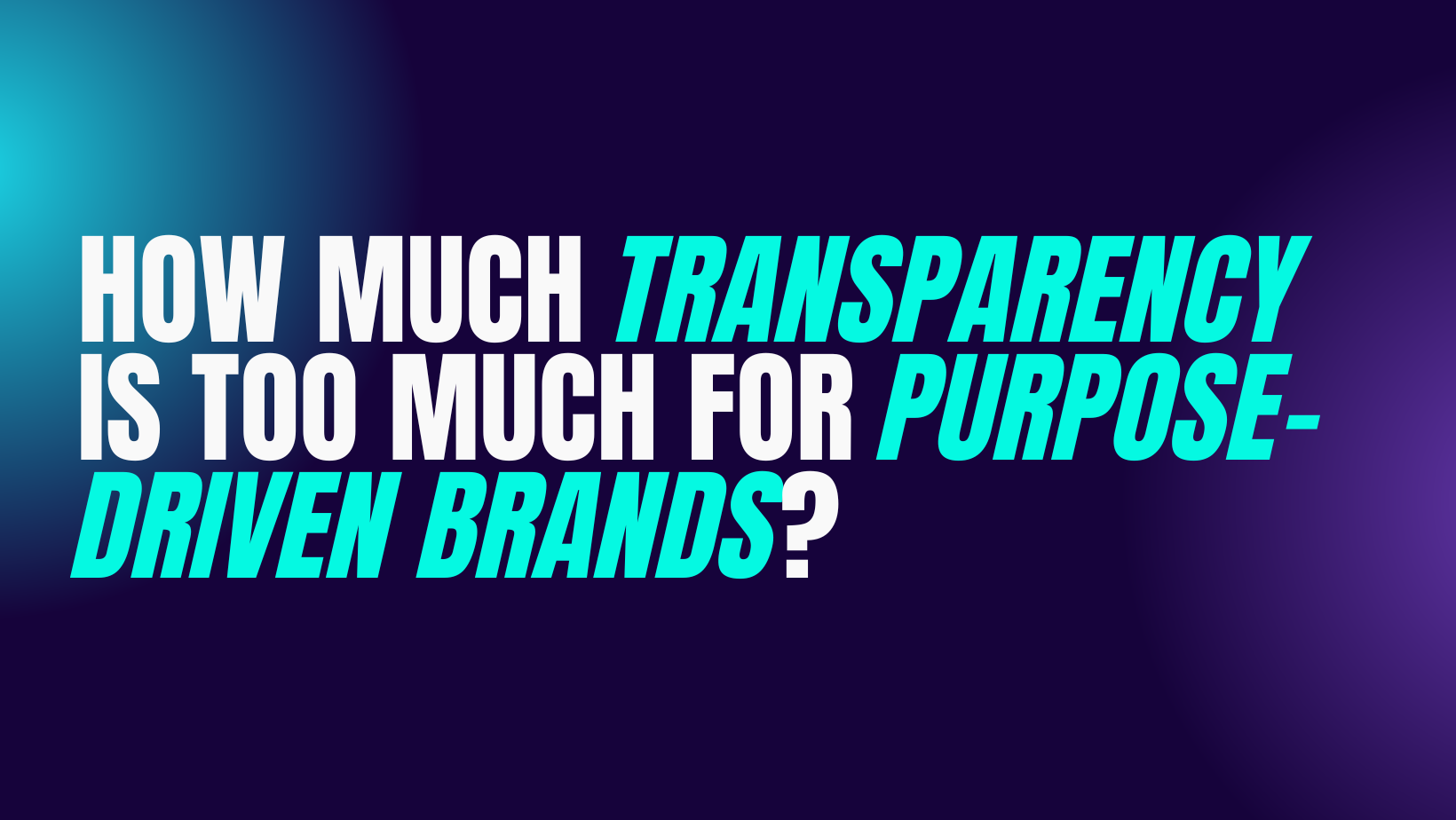How Much Transparency Is Too Much For Purpose-Driven Brands?
Transparency. It’s practically sacred in the nonprofit and purpose-driven world. It’s what builds trust, deepens relationships, and shows supporters you have nothing to hide. From openly sharing your financial statements to livestreaming every behind-the-scenes moment on Instagram, transparency has become the badge of honor organizations proudly wear.
But here’s an uncomfortable truth:
Too much transparency might actually be hurting your brand.
Yes, transparency is essential. But there’s a line between being refreshingly authentic and giving away so much detail that you overwhelm, confuse, or even alienate your community.
In other words, transparency is powerful—but only if you know when to draw the line.
Transparency Isn’t a Competition (But It’s Starting to Feel Like One)
Purpose-driven brands often compete to prove who can be the most open, the most raw, the most unfiltered. The logic makes sense: the more transparent you are, the more trustworthy you seem, right?
Not exactly.
Over-communicating every internal decision, sharing lengthy updates on every minor setback, or revealing personal details about your team in the name of authenticity might sound noble—but in reality, it can create noise, confusion, or even anxiety among your supporters.
Take, for example, the organization that shared detailed financial breakdowns so granularly that their followers got lost in the numbers, missing the big-picture impact entirely. Or the nonprofit that overshared internal staffing struggles online—gaining sympathy, sure, but also losing confidence from potential donors who began questioning their stability.
Transparency isn’t about who can share the most. It’s about clarity, honesty, and intentionality.
Your Audience Craves Meaning, Not Just Details
Here’s the shift purpose-driven brands desperately need:
Transparency isn’t just sharing everything. It’s about thoughtfully sharing what’s meaningful to your audience—what helps them feel deeply connected, informed, and empowered.
Think of transparency as storytelling. Every detail you share should help supporters better understand your mission, your impact, and their role in it—not overwhelm or distract them.
Your supporters don’t need every gritty detail of your internal operations. They need the right details—the ones that genuinely matter, inspire action, and build lasting trust.
How to Balance Authenticity and Oversharing (Without Losing Your Audience)
Ready to cut through the noise and harness transparency the right way? Here’s how:
Clarify Your Intentions: Always Ask “Why?”
Before sharing anything—whether it’s a behind-the-scenes update, a financial report, or even a personal anecdote—stop and ask yourself a simple question:
“Does this information help our audience better understand, trust, or act upon our mission?”
If it does, great. If it doesn’t—or if it risks distracting them—then it might be best left unsaid.
Example:
- Do this: Explain openly how you spend donations with clear, meaningful visuals.
- Not this: Share overly complex budget spreadsheets that leave your audience lost and overwhelmed.
Embrace Strategic Vulnerability, Not Raw Oversharing
Purpose-driven brands thrive on vulnerability—but vulnerability isn’t spilling your guts about everything.
Strategic vulnerability means openly discussing challenges, setbacks, or mistakes that genuinely contribute to trust, insight, and connection. It’s not oversharing personal struggles unrelated to your mission or releasing internal drama that might be intriguing, but ultimately distracting.
Example:
- Do this: Share a thoughtful reflection on how a program struggled initially and what you learned from it.
- Not this: Vent openly about internal team conflicts or frustrations that distract from your core message.
Provide Context, Not Just Content
Transparency without context creates confusion. Don’t just release data or information—provide meaningful context. Translate complicated figures into relatable, real-world impact stories.
Example:
- Do this: “Your donations last year directly funded clean water for 5,000 families—here’s how we did it.”
- Not this: “Here’s a spreadsheet of our quarterly expenditure. Good luck!”
Let Your Values Guide Your Boundaries
Your core values are the ultimate transparency filter. If you’re unsure about what’s appropriate to share, return to your values. Does the information you’re considering align clearly with those values?
Transparency is powerful only when it’s guided by purpose and intention—not when it’s merely performative.
The Art of Intentional Transparency
So here’s your HOLY SH*FT! moment:
Transparency isn’t measured by quantity, but by quality. Your supporters don’t want your every thought, struggle, or internal memo—they want to see clearly how their support matters. They want a genuine connection with your mission, not just your organization.
Transparency should never overshadow clarity, trust, or inspiration.
Because transparency isn’t about exposing everything—it’s about purposefully sharing what truly matters.
Are you sharing too little—or maybe too much? Finding your sweet spot might just be the most powerful branding shift you’ll make this year.
Ready to Take Your Storytelling to the Next Level?
At HOLY SH*FT! Creative Studio, we specialize in helping purpose-driven brands craft compelling narratives that resonate with audiences and amplify your mission. Our team of creative strategists is here to guide you in finding the right balance of transparency and impact. Let us help you share your story in a way that truly connects. Contact us today to learn more about how we can transform your brand’s storytelling strategy.

